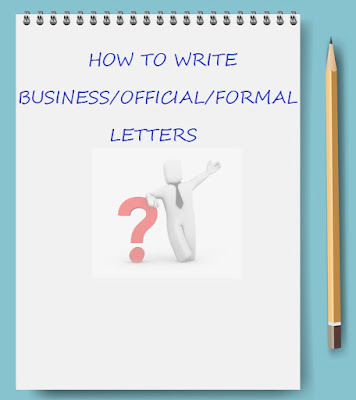A: Introduction
When writing these letters, one has to be much more disciplined. These letters should always be complete, concise, well planned, and clear and expressed politely in grammatically correct and accepted English.
B: Type of letters
Letters can be classified based on the purpose for which they are written. The following are examples of these letters:
· Application letters: written to apply for jobs
· Query letters: written when seeking information
· Complaint letters: written for complaining or claiming
· Resignation letters: written to resign from jobs
· Inquiry/order letters: written to order goods
· Confirmation letters: written to confirm or indicate that things will be done as requested
C: Components of an application letter
All business letters, regardless of their purpose, consist of the following parts:
|
i
|
Letter head
|
ii
|
Sender’s address
|
iii
|
Date
|
iv
|
Inside address
|
|
v
|
Salutation
|
vi
|
Title of the letter
|
vii
|
Body of the letter
|
viii
|
Complementary close
|
|
ix
|
Signature
|
x
|
Name
|
|
|
|
|
(i) Inside address
It comprises the name and designation of the person or title of the firm to whom or to which the letter is written, with the residence, place of business, or any other place which may be appointed for the receipt of the letters. The inside address corresponds with the address on the envelope, except that in the inside address, the town or city and district and country can be written on the same line.
(ii) Sender’s address
This is your address. It tells the reader from whom the letter comes. Letterhead paper takes care of this need, sometimes with a logo or other design element that identifies the company or institution. If you do not have a letterhead, then type your address, without your name, as the first element.
(iii)The Salutation
This is the greeting that begins the letter e.g. Dear madam. A formal salutation is followed by a colon (:)while a comma follows an informal salutation. When you don’t have a name to write to, omit the salutation line. Use an attention line with the name of the pertinent department or job title. Use Dear Sir or Madam when addressing someone you do not know their name.
(iv) Body
It contains the information to be communicated. It is, of course, of much importance.
Note: If you are typing a letter, use short paragraphs. Single-space for the text within the paragraphs and double-space between paragraphs.
(v) Complimentary close
This is placed two lines below the body of the letter, and consists of the words of respect expressing the feelings of the writer towards his correspondent. Some of complimentary closes are: Yours faithfully…, Yours truly, Yours Sincerely, Sincerely, etc.
(vi)The signature
This comes after the complementary closure. If your letter is hand-written, print your name under your signature. If it is typed, type your name under your signature.
B: Ways of writing an official letter
(i) Writer’s(sender’s) address should appear in the top right hand corner
(ii) The date should go under the address. The date is written in different ways: e.g. 02.1.2015; 02 January 2015; 02thJanuary 2014; January 02, 2014.
(iii) Always write the name and address of the addressee on the left, above the salutation
(iv) If writing to someone not personally known to the writer, begin with Dear Sir or Dear Madam
(v) Be brief whenever possible but make sure to include as much relevant information as possible
(vi) If there is the subject of the letter, it may be placed as the heading beneath the salutation
Note:
(i) Headings are often used in: letters between companies, government departments, associations, and to private individuals
(ii) It is incorrect to use the Latin word “RE” (meaning “about the matter”) before the heading, or indeed anywhere else in the letter.
(iii) “Dear Sir” is used to address one person while “Dear Sirs” is for the whole firm or any other group of people. Addressing people by name (e.g. Dear Mr. Binagi, etc.) is a means of achieving a friendly and polite tone and is increasingly being used especially when the writer and receiver have made each other’s acquaintance in earlier letters.
The use of first names in business letters is rare and usually confined to correspondence between people of equal status
(iv) If you are a lady, write: Mrs, Miss or Ms before or after your name so that the letters sent to you will be appropriately addressed.
C: Styles of Business Letter writing
(i) BLOCK STYLE
All parts of the letter start at the left margin. Paragraphs are not indented. Block style is used when one is typing a letter.
(ii) INDENTED STYLE
The first line of the paragraph is indented and one space left after each paragraph
